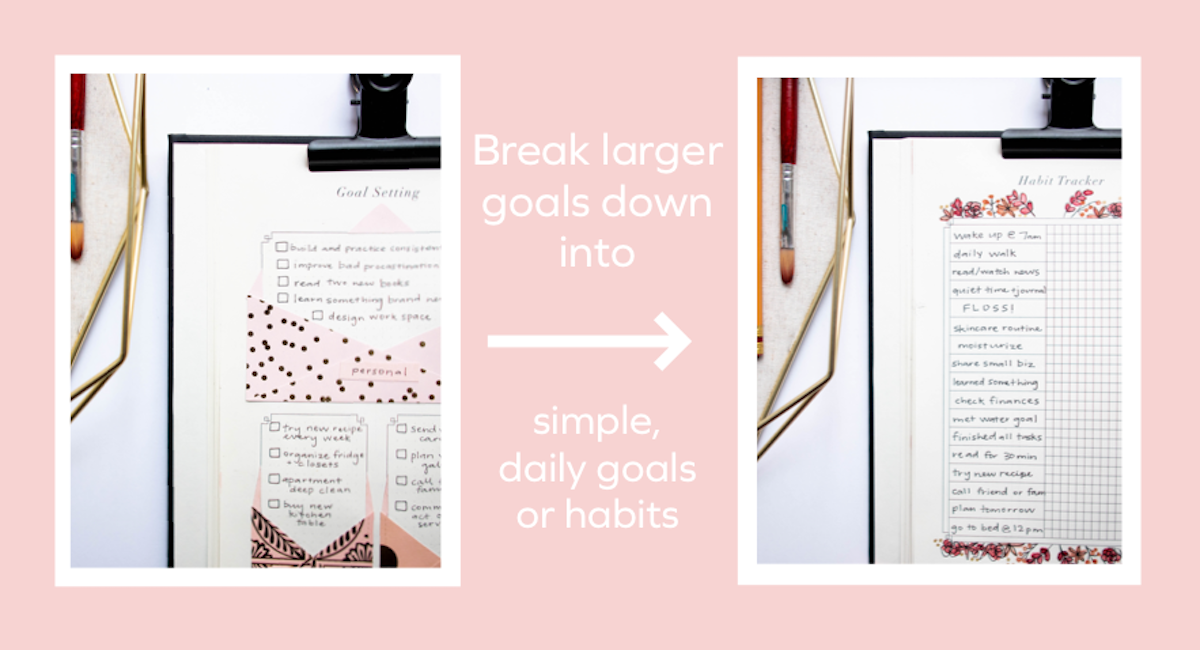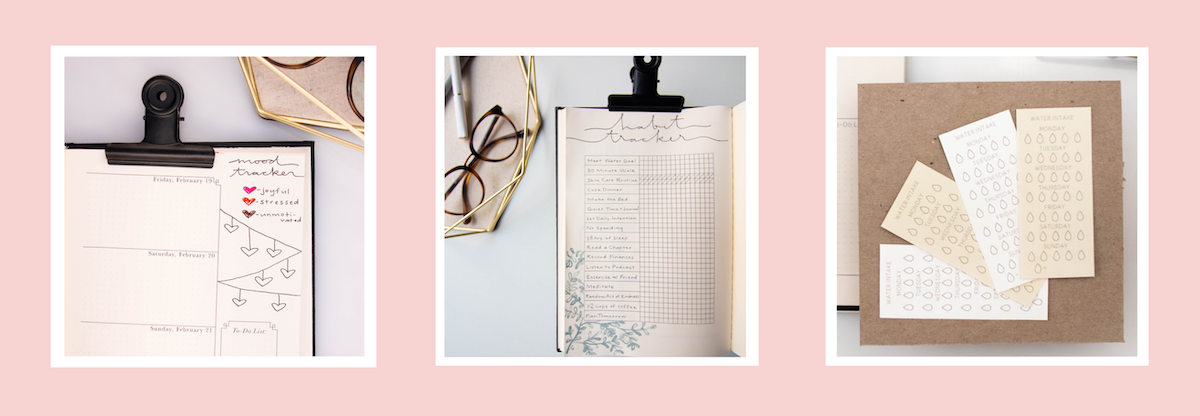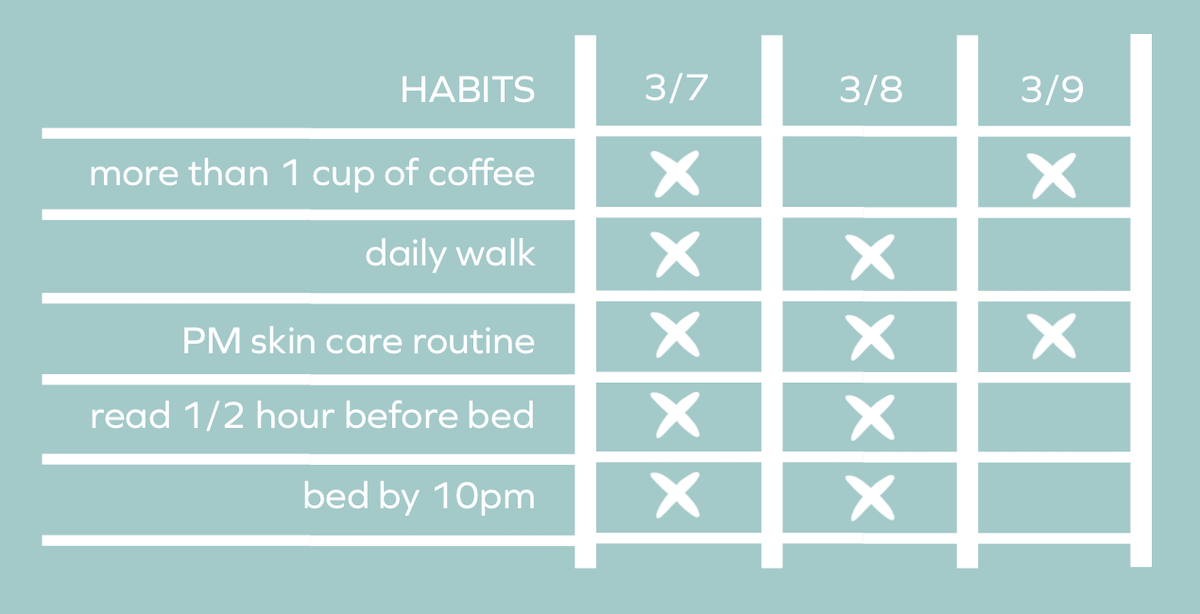Welcome to the Guest Blog Series!
My aim with these pieces is to highlight the experience and expertise of other badass female small business-owners who have something worthwhile to share!
I hope that in reading these, you learn something, feel motivated or inspired, or just enjoy a short read on an unexpected topic.
I’m so excited to introduce the first guest - my good friend & fellow dancer - Hailey Cooknick!
Hailey and I first met as wide-eyed freshmen at Point Park University! We both graduated and went on to perform and travel all over the world on cruise ships.
While we never crossed paths while at sea, Hailey and I reconnected when we both launched our businesses! Hailey started Cherish by Design, a company and Etsy shop, created to make capturing simple life simple and accessible.
Hailey is dedicated to living a more intentional life and figuring out how to capture what we do today in order to preserve it for tomorrow.
Today, Hailey is going to share how tracking our habits can help us learn about ourselves, lead more intentional lives, and how habits impact our daily well-being.
Without further ado, here’s Hailey!
Whether you work most efficiently in structure or spontaneity, tracking your habits can be a flexible and informative way to improve your daily life. Trackers help us visualize the strengths and weaknesses of our existing and/or goal-oriented habits. Speaking of habits- let’s define “habits” before we continue.
What if we thought about habits as simply the intentional behaviors we practice every single day? And it wouldn’t hurt if they generally contribute positively to our overall well-being, and are directly rooted in and initiated by the goals we set for ourselves on a monthly, annual, or even longer-term basis. Whew, not terribly complicated- right?! If the second question has you a tad overwhelmed, let’s break down how to choose relevant habits to track and how to observe the success of their consistency in our daily routine.
5 Steps to Optimize Your Habit Tracking & Improve Your Well-Being
STEP ONE: Link Habits to Current Goals
Your current list of goals is the perfect entry point for generating new habits to track. For example, you have set a goal to run a marathon. You have no plan, just simply a registration confirmation and a highlighted date in the calendar. Daily habits to assist towards this goal might be, running a mile a day for twenty-six days, increasing your water intake, or stretching at night before bed. These habits, while otherwise pretty ordinary, now have purpose and are associated with a larger vision for yourself.
STEP TWO: Choose the Best Duration
Now it’s time to decide the best duration for tracking your habits. You’ll notice some habits require different frequencies. For example, you brush your teeth twice a day, but you only review your finances once a week. Some habits are best tracked daily in a smaller duration of time, such as in a weekly calendar, whereas other habits are more easily tracked over a longer period, such as a month. The detail in which you want to track a goal might also impact which structure is best!
STEP THREE: Get to Tracking
There are so many creative ways to make tracking your habits fun and engaging. As mentioned above, there are daily, weekly and monthly variations that include various structures, color, and opportunities to doodle a bit, too! Check out habit trackers on Pinterest and you’ll see everything from coloring in different house plants based on mood to graph and chart types. There are also habit tracker stickers that make tracking all the more fun and functional.
STEP FOUR: Study the Data
Studying the data sounds way more mathematical than the simple observations you’ll make next. Once you’ve collected all the information regarding behavior and frequency, take a look at how habits positively or negatively relate to one another. This is an example of my own habit tracker.
The first column was on a Sunday, which tends to be a really successful day for practicing good habits for me, minus the indulgence of leisurely coffee almost all day long. Sundays are less busy, and it’s easier for me to concentrate on things I want to do versus things I need to do. I notice when I prioritize reading before bed or doing something active there is a positive correlation with the time I went to sleep. On the days with little to no physical activity and increased coffee intake, I was less likely to achieve going to bed on time.
This insight helps understand the value of not only individual habits but also how habits impact one another for overall well-being.
STEP FIVE: Make Adjustments as Needed
One way to study the tracker data is to notice how consistent or inconsistent your habits were throughout the week or month. This is the perfect opportunity in the tracker period to get reacquainted with your initial purpose or vision, being sure your habits are still healthy, balanced and mindful. At this point, you will also have a clear indicator of the habits that come pretty naturally to you versus the ones that might take a little more intention or effort.
Now that you’ve gone from an idea of a habit to the practice of a habit, you are on your way to building successful, consistent daily routines. Remember tracking your habits is not solely about perfectly completing a grid with every box or bubble filled in. It’s about supporting your larger goals with bite-size ones, and having a point of reference to adjust as needed. With a completed tracker you will immediately notice where your current strengths and weaknesses lie, which is perfect for building and adapting informed goals for the future. And I don’t know who needs to hear this, but if you are still working on getting consistency with that daily flossing habit- you are NOT alone!
For more habit tracking inspiration and tools, click the button below!
Make sure to follow Hailey on Instagram for a daily dose of STUNNING journals, doodles, and motivation!








